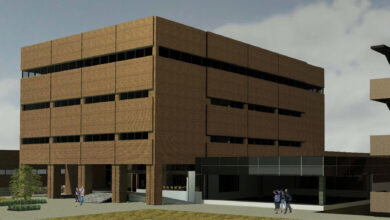Elbit Systems Rifle Tech Allows Soldier to ‘Shoot From the Hip’
Israel’s Elbit Systems has unveiled an artificial intelligence (AI)-powered system that allows soldiers to fire accurately around corners and from the hip.
The Assault Rifle Combat Application System (ARCAS) allows the soldier to hide behind cover and stick his gun out to see the target through the rifle-mounted sight.
The system consists of a miniaturized computer that receives and processes information from “the soldier’s field of view, through the EO (electronic optical) sight, tactical information from C2 (command and control) systems, data from other ARCAS users in the team, and the rifle’s mechanical information.”

Provides “Unprecedented” Combat Capabilities
The company has offered two system configurations: one with the helmet-mounted eyepiece attached to the rifle-mounted computer and a second with a rifle-mounted EO sight linked up to the computer.
The soldier receives the processed information “as an intuitive augmented reality” through a helmet-mounted eyepiece or the EO sight and uses a joystick button placed on the rifle’s forward grip.
According to the manufacturer, ARCAS provides infantry and special operations soldiers with unprecedented combat capabilities such as “passive range measurement, automatic ballistic correction, detection of fire sources, video motion detection…interface with tactical C2, navigation assistance, friend or foe identification, tracking of stoppage and ammunition and weapon zeroing without the need for live fire.”

Target Detection Capacity
Elbit states the system can detect a human target at 1,900 feet (579 meters), recognize it at 820 feet (250 meters), and identify the target at 390 feet (119 meters).
Dana Tal-Noyman, international corporate communications manager for Elbit, explained to Popular Science the different data requirements for various states of target detection: “The difference between Detection, Recognition and Identification is the amount of data that can be collected from the target, mainly the size of the target in regard to the sensor.”
“Detection is the ability to distinguish the target from the environment – detect there is something in the scene. Recognition is the ability to discern the type of target observed – is it a person or a car? Identification is the ability to understand specific details about the target – armed/unarmed, type of car, etc.”











